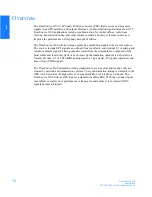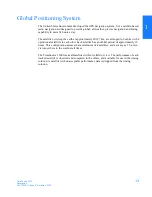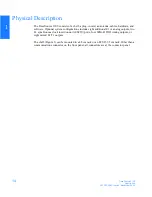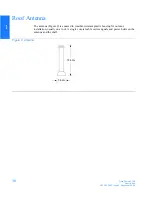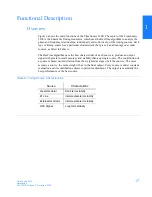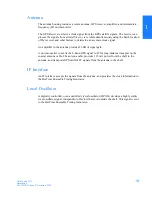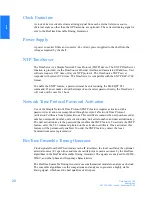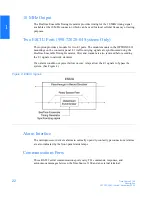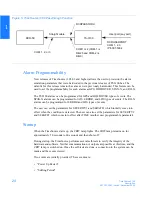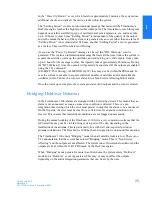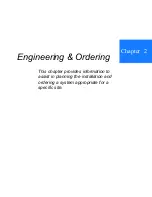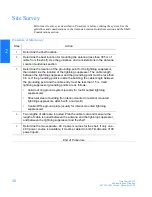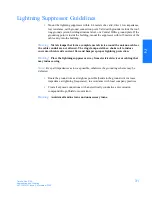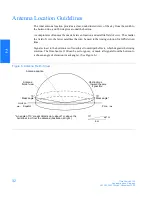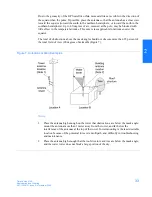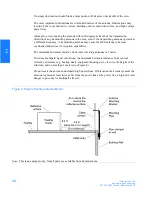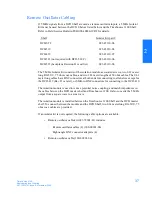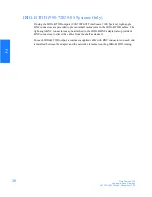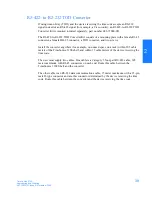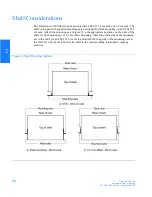
1
TimeSource 3100
25
Description
097-72020-01 Issue 9: November 2003
2
5
3
S
S
S
S
S
S
S
S
S
S
S
S
S
S
S
S
S
S
S
S
S
S
S
S
S
S
S
S
S
S
S
S
S
S
S
S
S
S
S
In the “Power Up Restart” event, which lasts for approximately 2 minutes, the system does
additional checks and starts all the various tasks within the system.
The “Settling Period” event is an informational message that lasts until the TimeSource’s
BesTime engine reaches the highest possible stable point. The time taken to reach this point
depends on satellite availability, type of oscillator, ambient temperature, etc. and may take
up to 20 hours to clear. Since “Settling Period” is independent of the quality of the output
and is the normal behavior of the system, it is generated as an event rather than an alarm. If
“Settling Period” is not cleared after 24 hours, another “Settling Period” event is generated
as a marker. This is still Non-Service-Affecting.
As soon as the “Power Up Restart” message is cleared, the “BT3 Warm-up” event is
generated. This is also an informational message that lasts till the time it takes the system to
acquire the satellites, warm up the oscillator, and start giving out valid outputs. It may take
up to 2 hours for the message to clear, but typically takes approximately 40 minutes. During
the “BT3 Warm-up” time, the outputs will generally be squelched. If the outputs are enabled
using the TL1 command
(ED-EQPT::TS3100:ctag:::ALMCOND=ALW;) they may not be within the PRS mask. In
case the system is not able to acquire sufficient number of satellites and/or discipline the
oscillator within 2 hours, the event escalates into a Non Service Affecting Minor alarm.
Once the warm up is complete, the system generates valid outputs and the event is cleared.
Bridging/Holdover Behavior
In the TimeSource 3100, alarms are designed with a built-in hysteresis. This means that an
alarm is not announced as soon as some error condition is detected. There is a pre-
integration time during which the error must persist in order for the alarm to be announced.
On the flip side, the error must be clear for a certain time for an alarm condition to be
cleared. This ensures that intermittent conditions are not flagged unnecessarily.
During the normal working of the TimeSource 3100, it is a very common occurrence that the
GPS satellites may not be visible during certain parts of the day, depending on the
installation of the antenna. This is particularly true with wall and, especially, window
antenna installations. The TimeSource 3600 has been designed to work around this situation.
The TimeSource 3100 enters “Bridging” mode when all satellite locks are lost. There is no
TL1 annunciation that the system has entered “Bridging” mode. This is “Non Service
Affecting” and the outputs are not affected. The system runs off its internal oscillator and the
outputs are kept within the G.811 PRS mask by the BesTime engine.
When “Bridging” mode persists for more than 30 minutes, the system enters “Holdover”
mode and a “Holdover” event is generated. This may or may not affect the outputs
depending on the alarm integration parameters that can be set by the user.
Summary of Contents for TimeSource 3100
Page 1: ...TimeSource 3100 GPS Primary Reference Source 097 72020 01 Issue 9 November 2003 ...
Page 49: ...3 Chapter Installation This chapter provides the steps required for installation and power up ...
Page 109: ...Chapter 4 TL1 Reference This chapter provides information for using the TL1 language ...
Page 203: ...Chapter 6 Specifications This chapter provides equipment specifications ...


